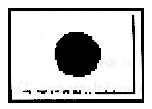
 s(结晶体). Snow crystals are very small crystals of ice. Ice is frozen water. It is a solid.
s(结晶体). Snow crystals are very small crystals of ice. Ice is frozen water. It is a solid.  a liquid
a liquid 
 阅读快车系列答案
阅读快车系列答案科目:高中英语 来源:2004年高考红皮书·英语 题型:050
阅读理解
Flags have existed for over 3000 yeas. The earliest flags were wooden or metal poles topped with a carving. About 2000 years ago pieces of fabric were added to some poles for decoration.
Over the next 500 years the free-flying part to the flag became more important.
Every country today has its own flag. Many groups and organizations also have a flag which stands for, or symbolizes, the aims of the group.

The United Nation The flag depicts a world map, centred on the north pole. The map is surrounded by an olive wreath, symbolizing peace and cooperation. The flag is blue and white.

Nepal This is the only national flag that is not a rectangle. The white shapes represent the sun and moon.

Singapore The five stars stand for five ideals: democracy, peace, Progress, justice and equality.

Japan The central red disc of the sun represents sincerity and passion. The white background represents purity and honesty.

Cambodia Three towers of the famous temple of Angkor Wat feature on this flag.

Bhutan The wingless dragon is the national symbol. Bhutan means “Land of the Thunder Dragon”.
1.A very old flag is likely to ________.
[ ]
2.An olive wreath is used to represent ________.
[ ]
3.Two flags that include the sun in their design belong to ________.
[ ]
A.Nepal and Japan
B.Singapore and Japan
C.the United Nations and Nepal
D.the United Nations and Singapore
查看答案和解析>>
科目:高中英语 来源:全优设计必修二英语北师版 北师版 题型:050
| |||||||||||||||||||||||||||||||||||||||||||||||||||||||||||
查看答案和解析>>
科目:高中英语 来源:2010年普通高等学校招生全国统一考试、英语(全国一) 题型:050
| |||||||||||||||||||||||||||||||||||||||||||||||||||||||||||||||||||||||||
查看答案和解析>>
科目:高中英语 来源:2010年普通高等学校招生全国统一考试、英语(新课标全国卷) 题型:050
| |||||||||||||||||||||||||||||||||||||||||||||||||||||||||||||||||||||||||
查看答案和解析>>
湖北省互联网违法和不良信息举报平台 | 网上有害信息举报专区 | 电信诈骗举报专区 | 涉历史虚无主义有害信息举报专区 | 涉企侵权举报专区
违法和不良信息举报电话:027-86699610 举报邮箱:58377363@163.com